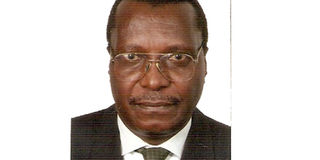Beware of debt sustainability

In the commercial world, debt sustainability is the ability to service one’s debts by paying both principal and interest as per agreed terms in the loan agreement. In addition, the entity should be maintaining adequate earnings to pay sufficient dividends to shareholders while sustaining its operations.
Inadequate dividends and shortage of working capital could trigger the collapse of the share price and loss of confidence in the company as a growing concern. A dissatisfied shareholder, lender or supplier could petition court for a winding up order.
In the case of government, debt sustainability means the ability to service its local and foreign debts by paying both principal and interest as scheduled. While doing so, the government should be able to maintain adequate funding for its investment in the public infrastructure as well as funding its recurrent public expenditures. Investment in public infrastructure aims at providing the necessary ingredients to drive sustainable development as defined by the United Nations.
The UN 2030 agenda for sustainable development include such elements as no poverty, zero hunger, good health, quality education, gender equality and clean water. It also includes affordable clean energy, decent work and economic growth, industry and infrastructure, sustainable cities, responsible consumption and production, reduced income inequalities and climate action.
While a dissatisfied public may vote out a government that has failed to deliver satisfactory services to its citizens, government inability to deliver services to its citizens could cause riots and civil strife.
Although the International Monetary Fund (IMF) and the World Bank (WB) grades Uganda’s debt sustainability as low risk (by June 2018), the situation on the ground indicates that we are not providing adequate funding for both our recurrent and capital expenditures. While the public service cries out for the meagre pay, teachers and doctors have had to resort to strikes to register their dissatisfaction about their pay.
On the other hand, decent work for our youth remains a pipe-dream (our youth are sold into slavery in foreign countries), our cities (even the new ones) are boda-boda driven, the gap between the poor and the rich is ever widening and most institutions are hardly functional. The main driver of this state of affairs is resource -constraint since the government is spending 12 per cent of its budget on debt servicing.
The government recourse to manage resource constraints has been heavy taxation as well increased local and foreign borrowing. However, heavy taxation and poor service delivery would in the medium term trigger reduced economic development leading to reduced tax collections and, therefore high likelihood of government failure to service its loans. The consequences of such a scenario are many but the most disastrous would be:
•Riots as citizens rebel against heavy taxes;
•The IMF/WB down-grading the sovereign credit risk and rating making it difficult for the country to access more credit on the world scene.
•Foreclosure of national assets such as roads, ports, goods in transit, foreign bank accounts and revenue collections.
•Military action to take over control of government.
•Interference in local elections and/ military coups.
Finally, some responsible people in government continue to think there is always money and borrowing is viewed as legitimate route to obtain more and more funds. Much as there is legitimacy for a government to borrow, especially given that we have oil resources about to be exploited, loan commitments beyond certain levels could land the country into the category of ‘resource curse’ countries.
The foresaid calamities may yet to materialise but, in terms of earnings, Uganda as a resource-cursed country, will be earning big revenue cashflows but will remain poor since a big chunk of the revenue would be going into debt service.
Mr Steven Turyahikayo
[email protected]


